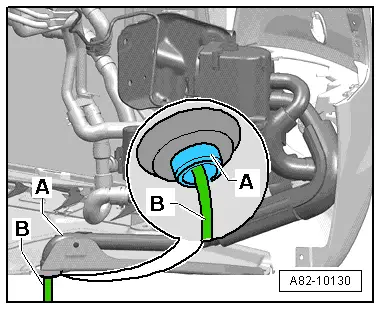| Special tools and workshop equipment required |
| t
| Vehicle diagnostic, testing and information system -VAS 5051/- |
| t
| Diagnostic wire -VAS 5051/5A- |
| t
| Exhaust emission test station -VAS 6300- |
| t
| Battery charger -VAS 5903- |
| –
| Connect up a battery charger, switch on ignition (and switch off all electrical equipment). |
| –
| Start engine (and switch off all electrical equipment). |

Note | Auxiliary heater guided fault-finding can only be started with the ignition switched on (the data bus diagnostic interface -J533- is only active when the ignition is on). Once the auxiliary heater has switched to diagnosis mode, auxiliary heater guided fault-finding can be continued even with the ignition switched off. |

Note | The following illustration shows the positions of the components on an Audi A5 Coupé. The layout differs slightly on the Audi A4 and Audi Q5. On these other vehicles the work is however to be performed in the same manner as described for the Audi A5 Coupé. |
|
|
|
 Note
Note Note
Note Note
Note Note
Note Note
Note
 Note
Note
 Note
Note Note
Note Note
Note Note
Note Note
Note
 Note
Note